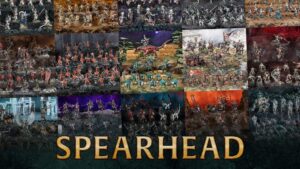It may not be surprising that a game called Starship Simulator focuses heavily on its starships, but the upcoming space sandbox from Fleetyard Studios will deeply intertwine the ships players can fly with its narrative as story chapters are released. There’s a long tradition of hero ships in science fiction being essentially characters in their own right. The scrappy Serenity from Firefly, the enigmatic Destiny from Stargate Universe, and even the mournful husks scrapped in Hardspace Shipbreaker exude personality. Some forms of sci-fi take that a step further by literally giving the ship a representation to interact with crew like Rommie from Andromeda, EDI from Mass Effect, or Zora from Star Trek Discovery.
That stems not just from conventions of fiction, but the way humans tend to personify their means of transportation. People talk to their cars and reference their boats with pronouns, and the love of horses has long outlasted their needs as a means of travel. For humanity, the means of travel can equate to a friend, so bonding with the hero ship, starting with the Magellan class, in Starship Simulator is a natural thing for players.
Dan Govier, director of Fleetyard Studios, sat for an interview with Game Rant as Starship Simulator’s Kickstarter campaign neared its end and explained how that character, the ship itself, forms the backbone of the game’s three-part narrative structure. It’s impossible to discuss the chapters of the game’s story without introducing the ships that players will inhabit in that chapter, so deeply are the two linked.
Introducing the Fleet of Starship Simulator
Players start with the Magellan class in the Early Access sandbox. Even as a pure sandbox experience, what the Magellan is as a ship is intrinsic to this proverbial Chapter 0, Govier explained. That’s because the Magellan class is a testbed of technology. From the FTL drive based on the work of real-world physicists Miguel Alcubierre and Erik Lentz and the ship’s fusion power plant to simply the concept of deep space exploration, the Magellan, named for the legendary explorer, is a trial of technology. This parallels the way that the free Early Access release is a testbed of the game itself.
Where the
Magellan
class is the testbed that humanity has sent out to test the technology of space exploration, the first campaign is going to be called the
Pathfinder
class. That’s the actual first mission of humanity going out there and exploring the stars. And whilst doing that, you will meet the hero races in the galaxy and also the big bad in the galaxy as well…It’s going to look and feel very much like the
Magellan
in the sense that it’s going to be like a corporate office in space. It’ll have those luxury interiors, carpeting, and such.
As is the case with prototypes going into full production, the Pathfinder will be a honed version of the Magellan. More advanced and purpose-driven, but sharing the “corporate office in space” aesthetic of its predecessor, the Pathfinder will be the first foray into the game’s real narrative. The Pathfinder will be a particularly Enterprise-style ship, with carpeted interiors, crew lounges, comfortable chairs, and sleek paneling, carrying on the interior design seen in the Magellan.
That aesthetic changes when the purpose of Earth’s fleet changes. When the galaxy’s big bad finds the Sol system, humanity’s home, the needs of ship design veer away from comfortable conference rooms and plush carpeting. The second chapter, the Agamemnon class, is about war. The needs of the second chapter are ones of pragmatic design and militaristic footing. If Starship Simulator is a more grounded Star Trek, the Agamemnon chapter is the Dominion War.
The second campaign is about that big bad in the galaxy finding where humans come from, finding the Sol system, and then the Sol system is at war with that race. The second campaign, the
Agamemnon
class, is very much a military-based campaign set aboard a carrier class military vessel…It’s not going to have carpets, it’s going to have practical interiors which are easy to maintain and aren’t robust, so it’s going to be a lot grungier with a lot more metal.
But in Starship Simulator, combat is a consequence of failed diplomacy, not a way of life for spacefaring humanity. The war will end, the dust will settle, and that will herald games-interstellar-colonization/”>a time of great expansion for Earth’s fleet in the as-yet-unnamed third chapter. The third chapter will bring humanity’s penchant for trade to the stars. The third chapter will be set on a variety of ships from a variety of manufacturers, ranging from aging fixer-uppers to sleek and cutting-edge vessels tasked with rebuilding after the war, expanding humanity’s cosmic presence, and establishing human colonies.
The first chapter–and the zeroth, after a fashion–tell the story of exploration aboard ships evocative of luxurious offices and classic sci-fi notions like the hotel in space that was the Enterprise-D in Star Trek: The Next Generation. The second chapter is one of conflict, aboard a ship closer to real-world aircraft carriers. The third, a story of humanity becoming a galactic player all its own, set aboard a veritable fleet of merchantmen, tramps, and cargo haulers.
Given Govier’s favorite ship in science fiction is the aforementioned Destiny in Stargate Universe and his desire to one day build a ship in that style, from there the story might veer into the cosmic mysteries of the species who flew the sky long ago.
Making a Ship a Home
Achieving the feeling of one hero ship beloved by an audience is hard enough. Building them constantly is a real challenge. The kind of work that goes into a Normandy or a Galactica isn’t to be underestimated, and the work that goes into the Magellan or the Agamemnon is magnified by Starship Simulator’s commitment to realism.
The Magellan was built in the kind of computer-assisted design programs used by real-world engineers on architectural projects all the time. Ships in the game will have fully mapped electrical systems, life support systems like those used in real-world submarines, and be 1:1 with the ship’s exterior. There is even a Kickstarter tier that offers players a full Magellan technical manual.
Throughout the design process, it’s been a case of answering questions like: what facilities will the ship need? What rooms do we need?… It’s 50% that sort of architectural work and thinking about how humans live aboard a vessel, and then another 50% on the actual design and construction of that vessel. And for that, I’ve been researching how we build real-world mega-vessels–things like aircraft carriers and cruise liners. How are they constructed?
Govier also explained that a recent revision of the Magellan will incorporate a ring around the vessel like Star Trek’s Vulcan ships, in keeping with the design principles of the real-world theories behind the Alcubierre drive.
Of course, with that kind of detail put into the design, having it undone for a player because they don’t like the sterile white of the default Magellan design would be a shame, so each ship in Starship Simulator will come with a wide array of customization options for players to tailor the ships to a particular aesthetic within the broader framework of the design. A player may not be able to carpet an Agamemnon, for instance, but there will be ways to make the hero ship unique to the player.
Govier also promised ships beyond just the classes tied to the main story will be released as DLC to help continue funding the free base game.
While we’re building those three campaigns, we’ll also be releasing much, much smaller, intimate ships based around maybe a five-man crew. Those, again, are going to have, depending on the manufacturer, a very different look and feel. You want to give players a lot of different scopes as to the look and feel that they are most attuned to … We’re choosing to give the base game away for free and then charge for additional ships because we want to remove all barriers to entry.
That level of customization even extends to the crew, who players will be able to name and customize with the same level of detail as they can their own characters, Govier said. There will be a variety of body shapes, hairstyles, hair colors, and so on available in the Early Access launch, and Fleetyard intends to bring on a character design specialist to games-rpgs-best/”>vastly expand that system throughout the game’s development.
Starship Simulator will enter Early Access on Steam in late 2024/early 2025.
#Hero #Ships #Form #Backbone #Starship #Simulators #Story




More Stories
Mass Effect 2: Should You Help Ish Get the Packages?
Coin Master: Free Spins & Coins Links
Sea of Thieves: Tutorial Secrets And Commendations (Maiden Voyage)